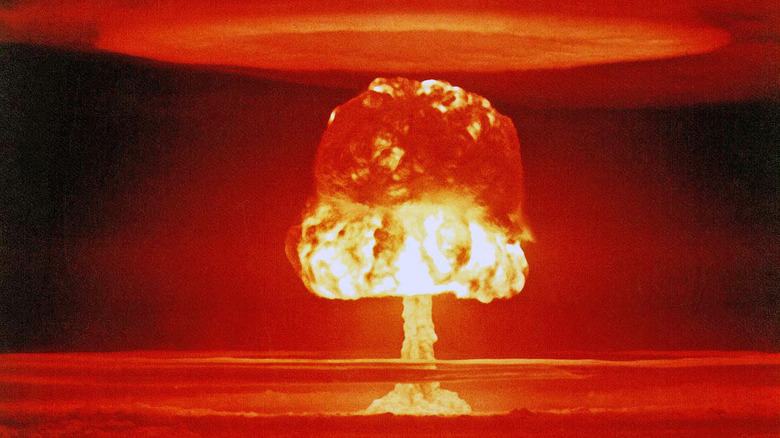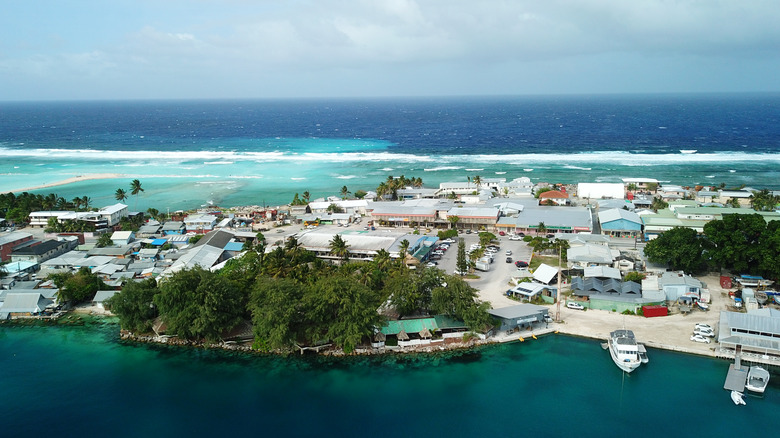This Island In The Pacific Ocean Is One Of The Most Dangerous Places On Earth
Located between Hawaii and Australia, the Marshall Islands consist of 29 atolls (via The Diplomat). Although the nation looks like paradise, it actually harbors a dark history. The BBC reports that between 1521 and 1979, the islands were under the control of various countries, including Spain and Germany. In 1914, the Japanese seized the islands, only to lose them to the United States in 1944. Thus began years of nuclear testing. Per Atomic Heritage, the United States would conduct 67 nuclear tests between 1946 and 1958 on the island's atolls.
The Los Angeles Times writes that this was all thanks to the Cold War and the United States' desperate desire to outdo the Soviet Union. Ultimately, it would be the residents of the Marshall islands who would suffer the most. In 1954, a hydrogen bomb named Bravo was detonated in Bikini Atoll. Despite the potential risks to both the people and the island, the government proceeded with its explosion. The results, as Britannica explains, were devastating. The Marshallese who lived in the nearby Rongelap Atoll would suffer from radiation sickness from the fallout. Though they were evacuated, the United States told them it would be safe for them to return.
The consequences of nuclear testing on the Marshall Islands
According to The Los Angeles Times, the Marshallese were treated like "human guinea pigs for U.S. radiation research." When they returned home to Rongelap Atoll "cancer cases, miscarriages, and deformities" became the norm. Meanwhile, the U.S. continued with its nuclear testing. At Enewetak Atoll, where they detonated most of their weapons, they dumped radioactive soil from a Nevada testing site. Per Britannica, testing ended in 1958 and the government began restoration efforts in the 1960s. On Enewetak Atoll, they built a concrete dome to store 35 "olympic-sized" swimming pools worth of radioactive debris.
In recent years, climate change has threatened to compromise it, which could potentially lead to catastrophic results. Although the Marshall Islands have continued to ask the U.S. for help, the U.S. has refused to take responsibility. The Diplomat reports that as of 2021, both Rongelap and Bikini Atoll are uninhabitable. Many of the Marshallese have immigrated to the U.S. to escape the effects of radiation. Others believe that the U.S. should apologize to the island nation. These efforts, for the most part, have been ignored. Nonetheless, Atomic Heritage writes that the Marshallese "continue to advocate for compensation."

